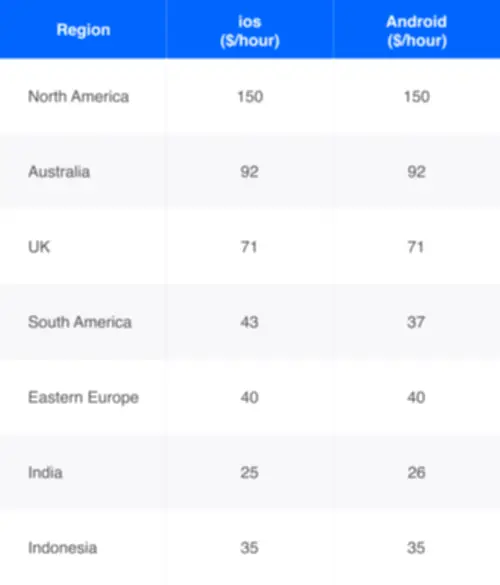+86-(0)768-6925905
They rely more on forecasting the outcomes based on previous efficiency. Scrumban also can assist teams transitioning between Scrum and Kanban. End-of-iteration meetings to replicate on the work done, consider successes and challenges, and showcase deliverables to stakeholders. Upskill your staff’s capabilities with the most recent what is scrumban learnings and best practices. We take a 360-degree, customer-centric strategy to UX/UI design and growth.

When To Make Use Of The Scrumban Methodology?
- For example, in Kanban, you might break down your typical blog post-production workflow into ideation, outlining, drafting, revisions, and publishing.
- This keeps group members solely working on one task in the intervening time and not taking up new work before the previous task is accomplished.
- These are mini scrum sprints, and are saved short so the group can simply make modifications to their work if they want to.
- Scrumban brings functionality into that environment and permits even small groups to thrive with its versatile framework for doing work.
Teams can modify their workflow dynamically, guaranteeing that there aren’t any bottlenecks and that tasks are accomplished primarily based on just-in-time principles. Performance is measured by lead time (the period of time taken to complete one task) and cycle time (the amount of time a task spent in WIP or in manufacturing except the queue). Kanban doesn’t have predefined iterations, but groups may use short time scales, like weekly goals, or longer plans, like quarterly targets, while nonetheless working in a continuous fashion.
How To Make An Agile Scrum Board For Project Management (with Examples)

This method means agile teams work in close live performance, acquire instant feedback, and make needed adjustments rapidly. Scrum is likely considered one of the hottest agile methodologies for lean software growth that divides projects into smaller cycles referred to as sprints. Each sprint lasts one to four weeks, allowing you to work on separate project sections individually. Scrum is an agile framework that organizes work into fixed-length iterations called sprints, often lasting from two to 4 weeks.Each dash has a aim and a set of tasks to complete. The staff consists of cross-functional members collaborating and self-organizing to deliver a doubtlessly shippable product increment at the finish of each sprint.
Scrum Vs Kanban: Evaluating Agile Frameworks For Distant Groups

Because of its flexibility, Scrumban permits for simultaneous initiatives, so even small groups can sort out multiple necessities. This table highlights the key variations between Scrum and Kanban, helping distant teams select the best method for his or her wants. It helps teams work easily and get issues accomplished, especially for remote groups. Weekly meetings to evaluation accomplished work and plan the subsequent duties in the queue.

However, scrum groups can obtain customer suggestions that encourages them to pivot and alter the dash to ship probably the most buyer worth. During the dash retrospective, scrum teams should talk about the method to limit change in the future, as modifications put the possibly shippable increment in danger. If a team frequently modifications scope mid-sprint, it could signify work was chosen that isn’t adequately understood. It could additionally mean the staff has operational/unplannable work that interferes with the plan. The Scrum process requires using fixed-length development cycles known as sprints, which often last between 1-4 weeks.
As such, the most effective project management methodology for your staff is the one you’ll execute completely. Using piecemeal components of a methodology will only make you lose out on the advantages that popularized the methodology within the first place. So while you certainly can adapt methodologies in your team’s use, it’s finest to use a methodology as supposed, adjusting only as needed. While you might hear it talked about as a definite methodology, Agile project administration more accurately refers to a category of methodologies that includes Scrum and Kanban. Still, there are elementary variations between Agile and Waterfall project management.
Scrumban encourages a continuous flow of labor by way of the varied stages of the event course of. This constraint helps prevent overburdening the group and promotes a smoother, more targeted workflow. Scrumban is a flexible and adaptable technique that blends the structure and iterative nature of Scrum with the lean ideas and visualization capabilities of Kanban. When evaluating Scrum vs Kanban vs Scrumban, you will want to understand not certainly one of these strategies is healthier than the others.
If Scrum is not applied right, the whole process of Scrum is an empty shell. Scrum is finest suited to complicated tasks with long timelines, altering requirements, and uncertain outcomes; it helps teams ship value incrementally, adapt shortly, and improve continuously. This kanban-style board helps make work in progress visible throughout the whole process.
In at present’s dynamic project landscape, a single methodology might not always perfectly seize your project’s unique wants. Hybrid approaches, combining components from different methodologies, can provide the flexibility and structure required for achievement. The 4 main project management methodologies we have explored – Waterfall, Scrum, Kanban, and their Agile umbrella – cater to various project landscapes. Selecting the most appropriate project administration methodology is crucial in making certain project success. Imagine a Kanban board – a visual representation of the workflow, with columns depicting totally different work levels.
During stand-ups, groups can also benefit from measuring progress towards dash objectives, reviewing a sprint burndown, understanding workload distribution, and more. Kanban is a visual workflow management that has roots in manufacturing. Work gadgets are represented by playing cards on a board, with lanes that characterize course of steps. Boards are used by teams to manage the collective work of the staff. While Scrum traditionally advocates for 1–4-week sprints, Scrumban permits production to take so lengthy as wanted to realize the most effective results.
All of this stuff began as two separate entities that mixed to create something utterly new. Teams could wrestle to find the best steadiness between the structure provided by Scrum and the flexibleness supplied by Kanban. The Scrumban framework promotes transparency in work by making course of insurance policies and blockers seen. Like Scrum, Scrumban advocates for the use of cross-functional, self-organizing teams. While embracing the continuous flow precept, it nonetheless acknowledges the value of iterative and incremental supply. The merchandise is moved to the subsequent bucket when the company has a plan and is ready to implement it.
Getting the group to decide to the ideas and construction of Scrumban will be the primary problem. Maybe you’ll get a small tip right here, or get impressed by one thing I’ve mentioned, but you’re the expert in tips on how to manage your personal time, not me. I chose to separate out the Backlog into “Backlog” which are seriously things I ought to do, and “Ideas” which is the dumping floor for my mind, and all the other ideas everyone is feeding me. Typically things move from Ideas to Backlog, however typically new cards simply go immediately into Backlog. I truly have yet to seek out the right system, however with Cardsmith, I can set up a system that I assume will work for me now, and then when it wants a tweak, I can simply change my method.
However, as an alternative of visualizing duties on a Kanban board, they do so on a Scrumban board. But what precisely does this relatively new methodology supply to project managers, and when must you use it? In this text, you’ll learn all you have to know concerning the Scrumban methodology and its finest practices. Plus, we’ll introduce you to a useful visual management software program to assist you implement Scrumban principles effortlessly. Scrumban is usually seen as a brief framework for teams transferring from Scrum to Kanban, but it might be a long-term answer. Many teams discover that it strikes the best balance between the structure of Scrum and the flexibleness of Kanban, making it a sustainable method for steady improvement.
The more transparent and engaged everyone seems to be, the smoother the process will be. It will help you to steadiness demand and capacity, stop bottlenecks, and enhance circulate. Kanban is relevant to any business course of that has distinct steps and deliverables. The framework does not require any radical changes in how work gets done; somewhat, it reveals alternatives for enchancment by making inefficiencies and issues visible.
Plus, visual boards — like Scrum and Kanban boards — to trace the status of duties and execute work in progress. In Scrumban tasks usually are not assigned to the team members by the group chief or project supervisor. Each team member chooses which task from the To Do section they’re going to complete next. This guarantees a clean process flow, the place all the group members are equally busy at all times. Because Agile strategies work incrementally, groups can adjust their processes with some frequency. Where Waterfall uses a set, rigid process, Agile methodologies encourage teams to enhance and modify workflow as needed.
Transform Your Business With AI Software Development Solutions https://www.globalcloudteam.com/
